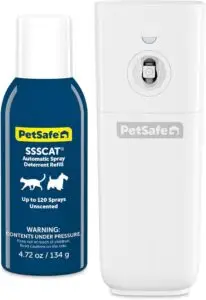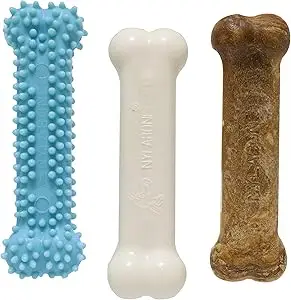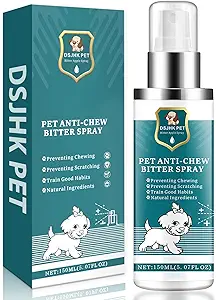Check out the best products on Amazon to help deter puppy biting! Find effective training tools to teach your pup better habits and protect your hands and furniture. See the top-rated solutions below! As an Amazon affiliate I earn commission on qualifying sales.
Taming Those Tiny Teeth: A Guide to Stop Puppy Biting 🐶💕
If you’ve recently welcomed a puppy into your home, you’ve probably already experienced their razor-sharp little teeth. With about 28 tiny “razors” packed into their mouths, it can feel like they’re on a mission to chew on your fingers, toes, and pretty much anything within reach. While this behavior can be a bit painful and frustrating, it’s perfectly normal for puppies. They’re simply going through the teething phase—a critical part of their development.
But don’t worry, you can train your puppy to stop biting with a few simple steps, all while making sure they understand the difference between playful nipping and harmful biting. Here’s how to handle those little chomps with ease.
Why Do Puppies Bite? It’s All About Development
Puppies are naturally inclined to nibble and bite. During playtime with their littermates and mother, they’ll bite each other as part of their learning process. If one puppy bites too hard, the other will yelp, signaling that the bite was too intense. This is how puppies learn to control the strength of their bite.
Your puppy is essentially going through the same thing with you, but since you’re not another dog, it’s up to you to teach them bite inhibition. Bite inhibition is a crucial skill that helps your dog understand how to interact with people and other animals without hurting them.
How to Teach Your Puppy Bite Inhibition
-
- Use the “Ow!” Method: Puppies respond well to vocal cues, much like they do when they’re with their littermates. If your puppy nips at you, let out a high-pitched “Ow!” sound, just like they would hear from another dog. This signals to them that their bite was too hard and it’s not acceptable.
-
- When “Ow!” Doesn’t Work: Some puppies might get even more excited or worked up when you yell. If this happens, don’t continue to engage. Instead, quietly turn around and walk away. By doing so, you’re communicating that the fun stops when they bite too hard. If you need to, gently place them in their crate for a short time-out to help them calm down.
-
- Reward Good Behavior: When your puppy backs off or adjusts their bite, be sure to reward them immediately with praise and treats. This positive reinforcement teaches them that gentle play gets rewarded, while rough play does not.
PetSafe Spray Deterrent for Training
This motion-activated spray releases a gentle, scentless burst to deter unwanted behaviors like biting or jumping—safe for both cats and dogs.
Consistency is Key
Training your puppy to stop biting is all about consistency. Every time they nip or bite too hard, you’ll need to respond in the same way. Over time, they’ll learn what’s acceptable and what’s not. Be patient and remember—puppy teething is just a phase that will eventually pass as they grow into a well-behaved adult dog.
By teaching your puppy bite inhibition now, you’re helping them build the social skills they’ll need to interact safely with humans and other dogs for the rest of their lives. So, while those puppy teeth may be sharp, the training process doesn’t have to be painful. With a little time and effort, you’ll soon be enjoying snuggle sessions without worrying about tiny teeth.
Puppy Teething Chew Bones
Soothe sore gums and curb destructive chewing with these safe, textured bones—perfect for teething puppies who need a satisfying outlet
Teach Your Puppy That Biting Means "Game Over"
If you’ve ever been in the middle of a playful puppy session, only to have your little one chomp down on your fingers or toes, you’re not alone! Puppy biting is a common (albeit painful) behavior, but the good news is that you can easily teach your puppy that biting has consequences—and those consequences mean the end of playtime. Here’s how to get that message across effectively.
The Key to Ending Playtime: No Biting Allowed
When your puppy bites you during play, the rules are simple: playtime ends immediately. This step is essential for teaching your puppy that biting won’t be tolerated. However, it’s important to avoid yelling at them. As counterintuitive as it may sound, shouting can actually be a form of positive reinforcement. Why? Because it gets a reaction from you, which is exactly what your puppy may be looking for. This can reinforce the biting behavior and even create fear around being handled.
Instead, as Kathy Santo, dog trainer and columnist for AKC Family Dog, recommends, use a calming signal by turning away from your puppy and tucking your hands into your armpits. This move is a subtle form of attention withdrawal that tells your puppy the fun is over, and it doesn’t reward the unwanted behavior.
Also, be cautious about roughhousing with your pup. While it might seem like a fun bonding activity, it can easily escalate into out-of-control biting. Stick to gentle play that helps your puppy learn proper boundaries.
Puppy Anti-Chew Bitter Spray
Discourage unwanted chewing with this safe, natural bitter spray—ideal for protecting furniture, shoes, and other household items.
Provide an Alternative to Chewing to Stop Puppy biting
One of the best ways to prevent biting is by offering something your puppy can chew on. Keep a puppy chew toy handy so you can quickly swap it out whenever they start nipping at your fingers, toes, or even your furniture. This teaches them what is acceptable to bite and chew.
If your puppy continues to bite after you offer the toy, immediately stop the play session. Redirect their energy by asking them to perform a basic command like “sit,” and reward them with the toy when they comply. Consistency is key here—every time they bite, the play ends, and the reward comes only when they behave appropriately.
KONG Puppy Chew Toy
Soothe teething pain and prevent biting with this durable KONG toy—perfect for keeping puppies mentally and physically engaged.
Prevent the Pounce
Puppies love to pounce—especially when they’re excited or trying to get your attention. If your puppy tends to pounce on your feet or legs as you walk, Santo has a great tip: hold a high-value treat near your leg as you walk. This helps teach your puppy to walk calmly beside you, rather than darting after your feet. This technique also works well for teaching your puppy to walk on a leash, reinforcing that calm behavior leads to rewards.
By implementing these strategies, you’ll help your puppy learn that biting doesn’t lead to more fun, while reinforcing positive behaviors. The more consistent you are, the faster your puppy will catch on, and before you know it, you’ll be able to enjoy playtime without worrying about sharp little teeth!
Time-Outs: A Calm Approach to Puppy Biting
If your puppy is getting overly bitey, sometimes a gentle time-out can work wonders. This isn’t about punishing your pup—it’s about giving them the space they need to calm down and reset. The best way to do this is by gently placing them in their crate. However, it’s essential that the crate doesn’t become a place they associate with punishment, so keep your tone calm and nonchalant. After a few minutes of quiet time, your puppy will be in a better headspace to rejoin the fun.
Is Your Puppy Overtired or Just Needing a Break?
Sometimes, biting behavior stems from your puppy being overtired or overstimulated. If your pup has been active for a while and seems to be biting more than usual, they may simply need some quiet time. Placing them in a quiet area or their crate for a nap can give them the rest they need. If that doesn’t seem to help, they might just need a quick potty break, or perhaps they’re hungry or thirsty. Always check the basics to ensure their needs are met.
Burn Off Some Energy
If you’ve tried offering a toy or taking a break and the biting continues, it could be a sign that your puppy just has too much pent-up energy. Puppies are naturally full of zest, and if they’re not getting enough physical or mental stimulation, they can turn to biting as a way to release that energy. Try taking them outside for a run around the yard or playing a game to help them burn off some of that excess energy. After a good play session, your puppy will likely be much calmer and ready to settle down for some quieter time.
By keeping your puppy’s needs in mind—whether it’s calming down, getting rest, or releasing energy—you can reduce biting behavior and set them up for success in their training.
It’s easy to focus on correcting the behaviors we don’t want from our puppies, like biting or chewing on furniture. But don’t forget to give praise when they’re calm and well-behaved! When your puppy is quietly sitting, resting, or just being relaxed, take a moment to reinforce those calm behaviors with a simple “good dog,” a treat, or even a quick pat.
By using positive reinforcement, you’re teaching your puppy what behaviors you want to see more of. Puppies thrive on consistency and rewards, so the more you praise the calm and good behaviors, the more likely they are to repeat them. It’s a simple yet powerful way to build a well-behaved puppy who understands the behaviors that get them love and rewards.
Reinforce the Behaviors You Want to See
It’s easy to focus on correcting the behaviors we don’t want from our puppies, like biting or chewing on furniture. But don’t forget to give praise when they’re calm and well-behaved! When your puppy is quietly sitting, resting, or just being relaxed, take a moment to reinforce those calm behaviors with a simple “good dog,” a treat, or even a quick pat.
By using positive reinforcement, you’re teaching your puppy what behaviors you want to see more of. Puppies thrive on consistency and rewards, so the more you praise the calm and good behaviors, the more likely they are to repeat them. It’s a simple yet powerful way to build a well-behaved puppy who understands the behaviors that get them love and rewards.



